
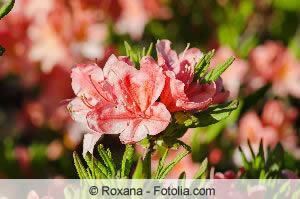
Table of contents
- Yellow leaves with dark veins (chlorosis)
- Measures
- Young leaves brown and deformed
- Measures
- Discolored, falling leaves in autumn
- Measures
- Withered shoots
- Measures
- Yellowish white speckled leaf upper side
- Measures
- curled leaves
- Measures
- Brown spots on leaves
- Measures
- Withered brown buds
- Measures
- Copper colored leaves
- Felty covering
- Conclusion
The rhododendron is loved by many hobby gardeners. Some gardeners become obsessed with collecting because of the many beautiful colors of rhododendron flowers. But some have little luck with the evergreen flowering shrubs. The leaves often turn yellow, brown or mottled, or the buds of rhododendrons turn brown. Sometimes entire shoots wither. Such problems can have complex causes, which can be found either in a wrong location, wrong care or in an infestation with harmful insects.
Yellow leaves with dark veins (chlorosis)
The most common appearance of rhododendrons is yellow leaves. If yellow leaves with green veins appear on your rhododendron and it hardly develops flower buds, then this is a sign of iron and magnesium deficiency. Possible causes for this are soil that is too calcareous or irrigation water that is too calcareous. If your rhododendron bushes are too close to fresh foundations, lime leaching from the fresh mortar or concrete can also be a cause of chlorosis. Because then the entire soil becomes too alkaline. However, rhododendrons require acidic soil with a pH of 4.5 to 6.0.
Measures
You can remedy this with a special rhododendron fertilizer, which mainly contains iron and magnesium. In addition, the fertilizer also contains all other nutrients such as phosphate, nitrogen, potassium and Sulfur needed by rhododendrons to keep them healthy and lots of flower buds bring forth. It is also important to improve the soil, for example with rhododendron earth. Measure the pH of the soil regularly. If it is too alkaline, then it is advisable to lower the pH using elemental sulphur. To do this, you can spread a tablespoon of sulfur powder in the area of the crown eaves of plants with severe chlorosis. If you live in a region where the surface water has a high pH value, then a permanent rhododendron culture only possible in raised beds, which are completely covered with special rhododendron soil are filled.
Tip:
Never use aluminum sulfate to acidify the soil! Aluminum ions are toxic to plants!
Young leaves brown and deformed
Brown and deformed young leaves are usually a sign of frost damage and can occur especially with less hardy rhododendron species. If the leaves are brown or lightened in summer, then it is usually a sunburn. Leaves and shoots can also show burns in winter, for example from the wintry morning sun.
Measures
When planting the rhododendrons, it is important to ensure that they are in the right location. It should be sheltered from the wind and not too sunny. Frost-sensitive rhododendron species should be protected in extreme locations in winter, for example with a mulch layer of pine needles and oak leaves on their flat roots. However, the mulch layer should not involve the trunk too much. The leaves are protected with shading fabric or conifer branches.
Discolored, falling leaves in autumn
Some rhododendron plants get yellow to reddish leaves in autumn, which later fall off. This is usually a completely natural process, because rhododendrons also shed their oldest leaves every two to three years.
Yellow leaves and stunted growth
If the leaves are yellowing and the rhododendron is dying, then there is a lack of nitrogen. The rhododendron-catawbiense hybrids, which require a lot of nitrogen, are particularly often affected. They are so-called nitrogen consumers.
Measures
Horn shavings are very suitable as a nitrogen fertilizer for rhododendrons and are preferably worked into the soil in spring as a long-term fertilizer. If you like, you can of course also work with artificial fertilizer. But then only in March and again in May. If fertilization is carried out later, the shoots no longer have a chance to mature properly and become lignified. Because only mature wood is frost-resistant.
Withered shoots
Dried shoots often indicate rhododendron wilt, which is caused by the fungus Phytophthora cactorum. The fungus clogs the pathways. If the infestation is very severe, the plants can even die off completely.
Measures
- Cut out affected shoots
- Remove cut shoots from the garden
- Spray with 1% copper lime broth
- apply at intervals of 10 to 14 days
- possibly choose a better location
Yellowish white speckled leaf upper side
If the upper side of the rhododendron leaves is mottled yellow-green to yellowish-white, the underside of the leaf is conspicuously black-brownish soiled and some leaves curl up, later dry up and fall off, so the plant is from the rhododendron bug (Stephanitis rhododendri) infested. The dark coating on the underside of the leaf is the droppings of the bugs and their larvae, remains of the skin and the larvae themselves. The rhododendron variety Flava is particularly susceptible to this bug. Likewise, rhododendrons are often affected in locations that are too dry and too sunny.
Measures
In May, June and July it is important to check the underside of the rhododendron leaves for infestation. If necessary, spray with a neem-containing insecticide.
curled leaves
When there is a severe lack of water, the leaves of the rhododendron curl up to protect against evaporation. These symptoms can show up in both summer and winter, depending on the weather.
Measures
- Apply a layer of mulch so that the water does not evaporate so quickly
- water regularly
- pay attention to soil moisture even in winter
- better site selection
- transplant if necessary
Brown spots on leaves
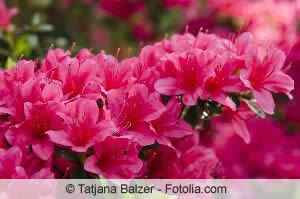
Rhododendrons in unfavorable locations often show round, brown spots on the leaves, which indicate fungal infestation. Then you may be too close to large, shallow-rooted trees, which rob them of nutrients and thus weaken them.
Measures
The parts of the plants affected by fungi must be cut off and burned or put in the household waste. They must not end up on the compost or in the organic waste. If the rhododendrons are too close together with flat-rooted plants, they should be transplanted. For example, rhododendrons fit well under thujas, pines and cypresses, as these trees have long roots.
Withered brown buds
Withered, brown buds with small black spines indicate rhododendron bud rot (Pycnostysanus azaleae), which is spread by the rhododendron leafhopper. In autumn, the rhododendron planthoppers lay their eggs in fresh buds. In May of the next year, the yellowish larvae hatch and feed on the plant sap by sucking on the undersides of the leaves. A very severe infestation with rhododendron leafhoppers is then noticeable by the mottled leaves. From about July, the adult animals can be seen, who very quickly jump away or fly as soon as they are disturbed. This species of cicada is very easy to spot because of its two slanting orange lines on its green forewings. Fungal infestation occurs even during egg laying. Because then the cicadas cut slits for the eggs in the scales of the buds. Fungal spores adhering to the cicadas can penetrate the plant through these injuries. The damage will not become visible until the following spring.
Measures
Already in April you should remove suspicious buds from a large area and burn them or dispose of them with household waste. As a preventive measure, you can put up yellow boards in summer. However, beneficial insects such as bees, dragonflies, butterflies and bumblebees can also stick to it. Biological insecticides made from neem extract are also advisable to curb the cicada population.
Tip:
Unfortunately, since there is no effective fungicide to completely eradicate the fungus, you should rely on natural measures, such as regular spraying Break out the affected buds, settle natural predators such as songbirds and beneficial insects in the garden and regularly treat the rhododendrons with homeopathic strengthen resources.
Copper colored leaves
This discoloration is a natural fall and winter coloration of the 'Winterpurple' rhododendron variety. In the cold season, its leaves turn a beautiful copper color.
Felty covering
There are rhododendron varieties that have a felty coating (indumentum) on their leaves, for example Yakushimanum selections such as 'Schneekissen', 'Edelweiß', 'Koichiro Wada' or 'Silver Lady'. Due to the fine hairiness of the leaves, these varieties should not be attacked by bugs and cicadas, according to experts.
Conclusion
Rhododendrons need acidic soil and regular fertilization so that they thrive and are immune to fungi and other diseases. Only with a good immune system can they defend themselves against harmful insects, fungal diseases and other adversities. The right location and a good water supply are also crucial to ensure that the plants remain healthy and strong. However, regular checks of the leaves and buds of the rhododendrons are always advisable in order to avoid possible damage at an early stage or to stop the spread.
 garden editorial
garden editorial I write about everything that interests me in my garden.
Learn more about caring for plants
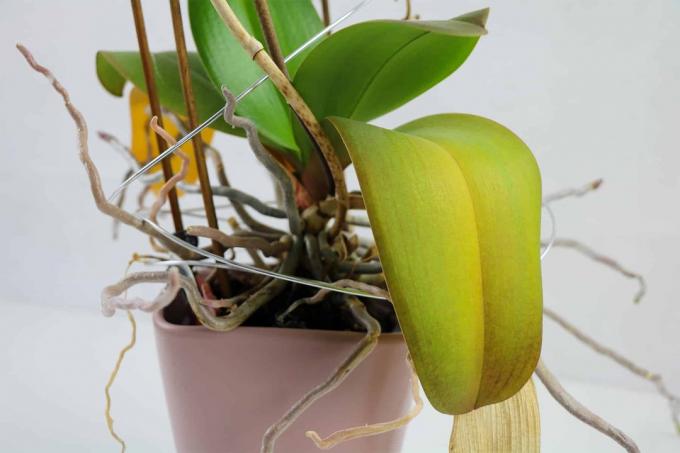
Plant hangs leaves despite water
If plants let their leaves hang despite water, this can have various causes. In order to prevent it from dying off by taking rapid countermeasures, you should find out about the possible causes and effective countermeasures here.
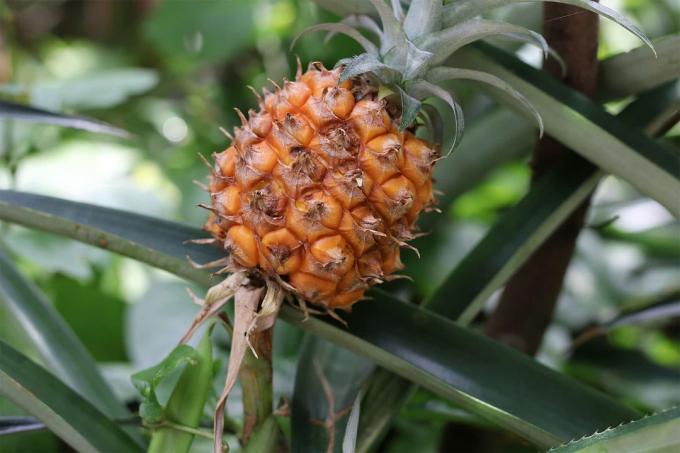
Plants hang their heads: what to do?
If the ornamental plants are cultivated in the garden or in pots and suddenly let their heads droop, then the question quickly arises as to why this can be. However, this is usually due to maintenance errors that need to be checked. If a remedy is found, most plants usually recover quickly.

Repot orchids: how & when to replant
Thanks to more uncomplicated and easy-care new breeds, orchids are now at home on many windowsills. In particular, the Phalaenopsis or butterfly orchid, which is available in countless varieties, is very popular. Read how and when you can best repot the distinctive beauties.

pull tree out of core | 7 tips for growing a tree yourself
Trees can be grown from cores without much effort. There are a variety of plants that have seeds and can be easily cultivated in your own garden. Special classic fruit trees should be mentioned, which are suitable for such a project.
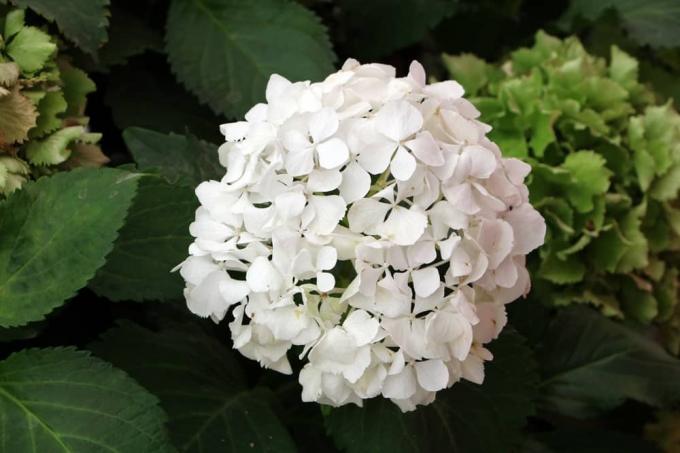
How do hydrangeas stay white? | That way it won't turn pink
How do hydrangeas stay white - this is the question many hobby gardeners ask themselves when the hydrangea changes color. The white often turns into a pink, which is usually comparatively pale or can appear "dirty". Here we reveal how it works.
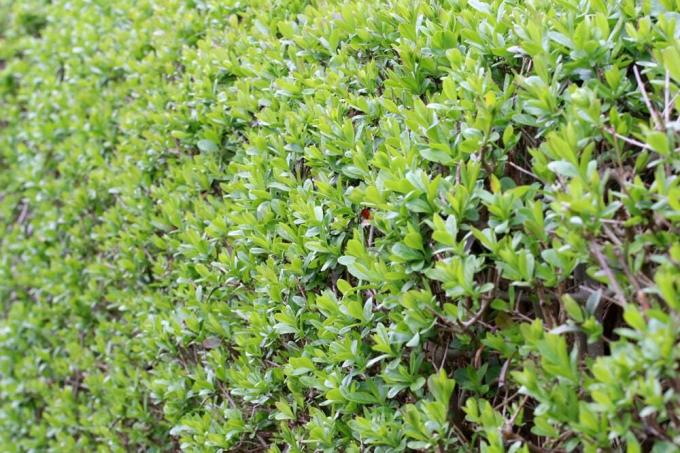
Cutting privet: when is the best time?
Privet is becoming increasingly popular and is often used as a privacy screen in the form of a privet hedge. This is not surprising, because the plant is easy to care for and fast-growing. However, it is crucial to cut the plant regularly at the right time.



